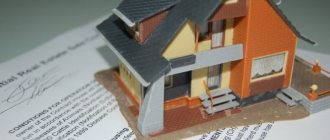Hi-tech style of architecture is an innovative and modern trend in building design where technology is integrated into architectural forms, creating impressive and functional structures. In this article we will look at the key features and characteristics of hi-tech style, and also talk about the influence of technology on modern architecture.
1. Technological Minimalism Hi-tech architecture is often associated with minimalism, where forms and designs are emphasized by clean lines and the absence of unnecessary details. This creates an impression of modernity and functionality.
2. Use of Innovative Materials
- Glass and Steel: Hi-tech buildings prefer the use of glass and steel, which creates an effect of transparency and lightness.
- Composite Materials: Using advanced composite materials to create lightweight and durable structures.
3. Technological Design Elements
- Electronic Systems: Integration of smart home electronic systems and automation to ensure comfort and energy efficiency.
- Innovative Lighting: Application of modern LED technologies and dynamic lighting.
4. Energy Efficiency and Sustainability
- Green Technologies: Using technology to create green roofs, energy saving systems and energy recovery systems.
- Solar Panels and Wind Generators: Integration of renewable energy sources for self-consumption.
5. Geometric Symmetry and Futuristic Shapes
- Geometric Outlines: Hi-tech architecture often favors geometric symmetry and clean lines.
- Futuristic Shapes: Experiment with unusual shapes and asymmetrical designs.
6. Spatial Solutions and Open Layouts
- Open Plans: Spaces in hi-tech buildings are designed with open floor plans, creating a feeling of spaciousness and light.
- Stairs and Elevators as Design Elements: Integration of modern stairs and elevators into the design, emphasizing the technological character of the building.
7. Digital Screens and Interactivity
- Screen Facades: Using digital screens and projections to create interesting facades and opportunities for art projects.
- Interactive Elements: Hi-tech architecture may include interactive elements such as touch panels and interaction with media content.
8. Urban Integration and Landscape
- Urban Architecture: Hi-tech style is often chosen for modern city buildings and high-rise skyscrapers.
- Landscape Integration: Using technology to create sustainable and functional landscape solutions.
9. Impact on Modern Cities
- Innovative Projects: Hi-tech architecture is becoming a symbol of innovative urban projects, emphasizing modernity and technological progress.
Hi-tech style of architecture is a unique fusion of technology and modern design that reflects the desire to innovate and create smart and sustainable urban spaces.










